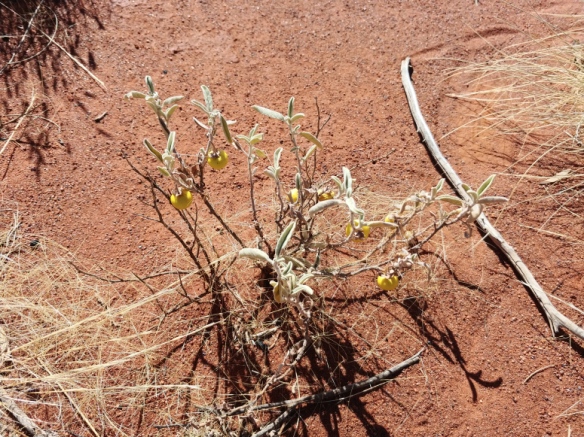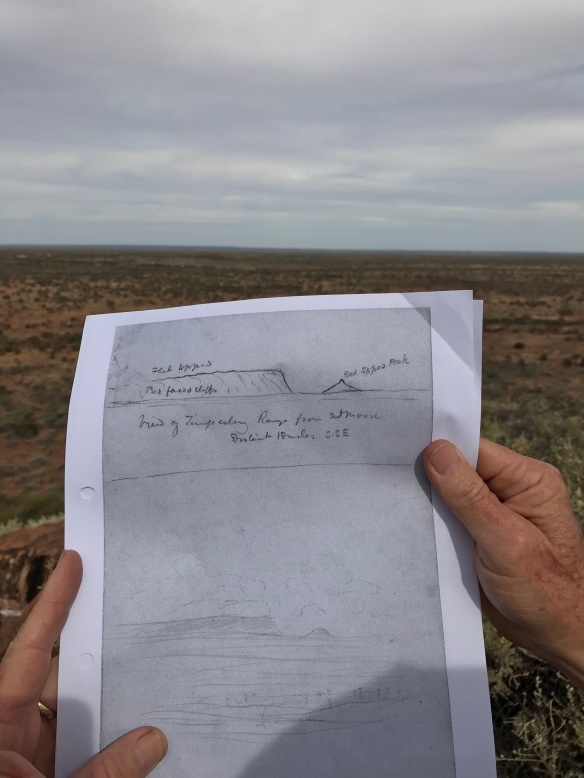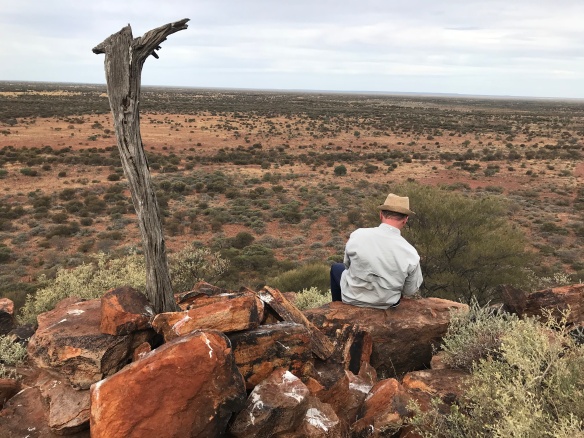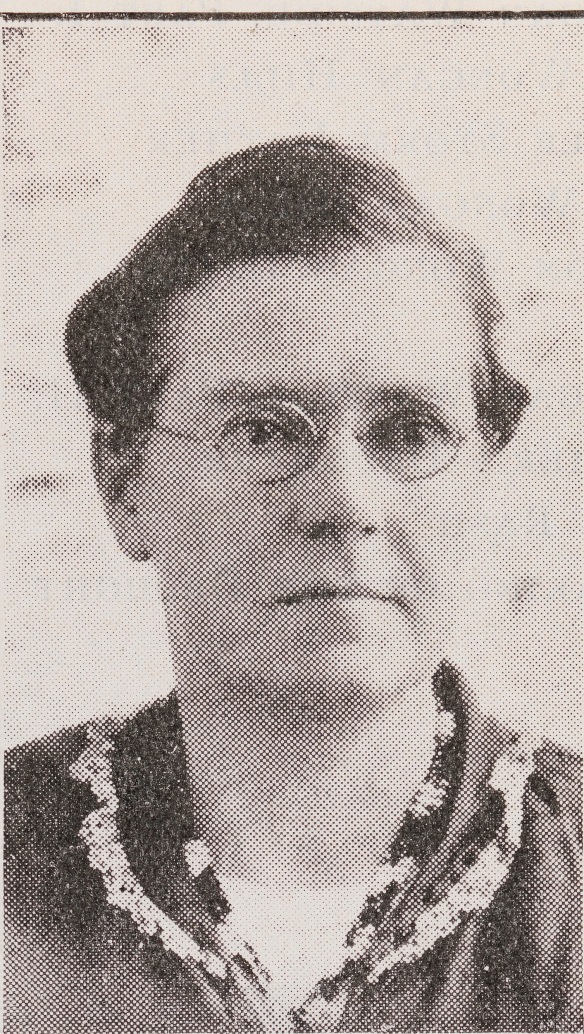Users are warned there may be words and descriptions (from historical texts) that may be culturally sensitive and which might not normally be used in certain public or community contexts.
Given the success of the Storylines session the From Another View project team undertook on our previous visit, a follow up session at the Laverton Community Resource Centre was held. The session was another success with new insights into ways Aboriginal peoples lived, worked and moved throughout the Goldfields and Western Desert regions.
People attending the session were able to identify a number of previously unidentified people in photographs on Storylines. For example, the image below had only identified Mr Lapten in the foreground. However, during the session Mr Noel Green in the background was identified.

Mr Lapten with hose near windmill at Cosmo Newbery Mission. https://storylines.slwa.wa.gov.au/archive-store/view/6/7594
Previous to the From Another View project there were no known photographs of Noel in the State Library collections but as a result of this engagement there are two images, which are now easily accessible to his family.
The image below, a grindstone photographed in Warburton in the 1960s, started discussion about its traditional use. Community members informed us that grindstones are used to grind seeds from plants like Mulga trees, wildflowers, grass and others to make flour for damper.

Grindstone, Warburton, 1960’s https://storylines.slwa.wa.gov.au/archive-store/view/6/2450
Ngaanyatjarra Lands 8 – 10 August
Warburton
John Forrest and the expedition team travelled north of where the Warburton Community is now located. During the travel they had interactions with Yarnangu people:
“11th [August]. Continued on to the water found ahead, and on our way saw some clay-holes with water and satisfied the horses. When near the spring, saw natives’ tracks, and shortly afterwards a fire with a whole kangaroo roasting in it. The natives had made off when they saw us, leaving their game cooking. Continuing on, and passing the native well, we reached the granite rocks, two miles from the spring, and camped. While having dinner we saw two natives about a quarter of a mile from us, watching us; we beckoned to them, and Windich and I approached them. As we neared them they began talking and moving off slowly; we could not get close to them, although they did not appear to be afraid of us. Some fine ranges are visible from here South-East.East.”
– Forrest, J. Explorations in Australia. 1875 online at Project Gutenberg
http://gutenberg.net.au/ebooks/e00051.html
The project team visited the Wilurarra Creative youth arts centre and Warburton Arts to discuss the project. Wilurarra Creative undertake a number of projects in visual arts, music, audio visual and fashion including operating a hair salon. Warburton Art centre is an international art space and holds “the largest collection of Indigenous art in Australia that is held by Aboriginal people themselves”.
Blackstone
During the trek, Alexander Forrest collected plant specimens at locations north of Warburton and east of Wingellina community. Approximately half of the specimens collected have known ethnobotanical uses. The purpose of the visit to Blackstone was to identify plant specimens which were collected during the 1874 expedition, and learn about the traditional cultural knowledge of plants.
After an early drive from Warburton (to account for a change in time-zone) the project team met up with the Blackstone/Papulankutja Ranger group. The group took the project team to a place between Wingellina and Blackstone overlooking Mt Aloysius .
The group dug for maku (bardi/witchitcy grub) in the roots of Acacia bushes and prepared a bush tomato (Solanum) to eat. In the local Ngaanyatjarra and Pitjantjarra languages the maku bush is called wartakarra/warṯarka and the bush tomato kampurarrpa, karti-karti/kampuṟara.

The following photos are by State Library of Western Australia. Thank you to Blackstone Rangers and Ngaanyatjarra Council for giving permission to take and use photographs.


Bush tomato plant, possibly Solanum chippendalei

Preparing bush tomato for eating.
It was a cold day so the Storylines session was moved from the ’50 cent hall’ to the Women’s Centre. The session was well attended by the community including children, community elders and the Ranger group.
There were a lot of stories shared about life at the Warburton mission and people identified photos of community members. Community members described the photo below as “ration time”. Those present explained “The first warden to the right (in police hat) is there to check on everyone and make sure there’s no trouble”.

Store, Warburton Mission, 1958-1961 https://storylines.slwa.wa.gov.au/archive-store/view/6/2554
The Community members also explained that the rock hole identified in the photo below, is a soak. “When they dig out, they put grass on it, so the water can come up clean… Natural filter. This is a soak not a rock hole.”

Digging out a rock hole, Warburton Ranges, 1949 https://storylines.slwa.wa.gov.au/archive-store/view/6/2463

Filtering rockhole water with spinifex to clean it, Warburton Ranges, 1949 https://storylines.slwa.wa.gov.au/archive-store/view/6/2466
For more information about the From Another View Project, visit the website
Storylines is an online archive managed and hosted by the State Library of Western Australia, with advice and guidance provided by an Aboriginal Reference Group with ongoing state-wide consultation. Storylines provides for the digital return of photos and other materials directly to Aboriginal families, communities and people. It is also helping to identify many of the photographs in the J.S. Battye Collection at the State Library. Hundreds of photographs have been identified since 2013. To access Storylines go to: https://storylines.slwa.wa.gov.au
























